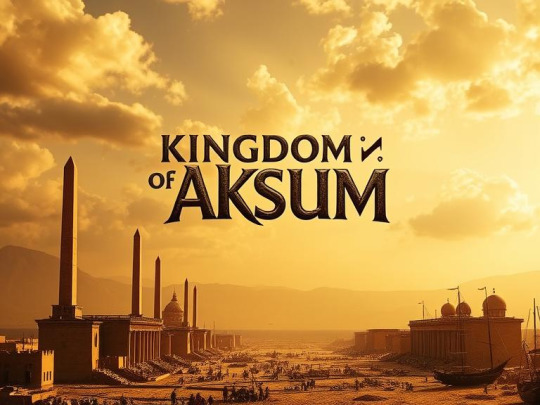#histories-secret
Explore tagged Tumblr posts
Text
What Do We Know About the Cucuteni-Trypillia Culture?🔥

The Cucuteni-Trypillia culture, flourishing between approximately 5500 BCE and 2750 BCE, represents one of Europe's most intriguing prehistoric civilizations. Spanning regions of modern-day Romania, Moldova, and Ukraine, this Neolithic-Chalcolithic culture is renowned for its expansive settlements, intricate pottery, and unique societal practices. This comprehensive overview delves into the history, archaeological findings, societal structures, and eventual decline of the Cucuteni-Trypillia culture, highlighting its enduring impact on human civilization.
Origins and Historical Context: Emerging around 5500 BCE, the Cucuteni-Trypillia culture developed in the forest-steppe regions of Eastern Europe. It is characterized by its transition from small agrarian communities to large, organized settlements. This period marked significant advancements in agriculture, animal husbandry, and craftsmanship, laying the foundation for complex societal structures.
Political Structure and Societal Organization: The political framework of the Cucuteni-Trypillia culture remains a subject of scholarly debate. Evidence suggests a largely egalitarian society with communal decision-making processes. The absence of centralized authority figures or monumental architecture indicative of hierarchical rule implies that governance may have been managed collectively by community elders or councils. However, as settlements grew in size, emerging social stratifications likely influenced resource distribution and labor organization.
Archaeological Discoveries and Settlement Patterns Archaeological excavations have unearthed over 2,000 Cucuteni-Trypillia sites, revealing settlements that were among the largest in Neolithic Europe. Notable examples include: Talianki: Covering approximately 450 hectares, this settlement housed around 15,000 inhabitants around 3700 BCE. Dobrovody: Spanning 250 hectares, it accommodated up to 10,000 residents by 3800 BCE. Maydanets: Encompassing 250 hectares with 1,575 structures, it was home to about 10,000 people around 3700 BCE.
These settlements were meticulously planned with concentric circular layouts and radial streets, reflecting sophisticated urban planning. The dwellings, constructed using wattle and daub techniques, often featured multiple rooms and were periodically burned and rebuilt—a practice whose purpose continues to be explored by researchers.
Economic Practices and Trade Networks: The economy of the Cucuteni-Trypillia culture was predominantly agrarian, with inhabitants cultivating crops such as wheat, barley, and legumes, and domesticating animals like cattle, sheep, and pigs. Evidence of long-distance trade includes the discovery of materials like obsidian and marine shells, indicating exchanges with distant regions. The use of copper tools and ornaments suggests early engagement with metallurgy, marking a transition from the Neolithic to the Chalcolithic period.
Artistic Expression and Pottery: The culture is celebrated for its exquisite pottery, characterized by intricate geometric patterns and a distinctive color palette of red, white, and black. These ceramics often featured spirals, meanders, and other complex motifs, reflecting a high degree of artistic sophistication. Additionally, numerous anthropomorphic and zoomorphic figurines have been discovered, indicating a rich tradition of symbolic and ritualistic art.
Religious Beliefs and Rituals: Religious practices within the Cucuteni-Trypillia culture appear to have centered around fertility and nature worship. The prevalence of female figurines suggests a possible emphasis on a mother goddess archetype. Ritualistic structures and artifacts, including altars and offering pits, have been identified, pointing to complex spiritual ceremonies. The intentional burning of settlements, occurring approximately every 60 to 80 years, may have held ritual significance, symbolizing renewal or purification.
Societal Structure and Daily Life: The societal framework was likely communal, with shared responsibilities in agriculture, construction, and craft production. The uniformity in housing structures and burial practices suggests a relatively egalitarian social order. The absence of fortifications in many settlements implies a period of relative peace, although the reasons for this remain speculative.
Technological and Scientific Advancements Technological innovations of the Cucuteni-Trypillia culture include: Metallurgy: Early use of copper for tools and ornaments. Ceramic Production: Advanced kiln technologies enabling high-quality pottery. Agricultural Techniques: Development of crop rotation and possibly early irrigation methods. These advancements reflect a society adept at manipulating its environment to support a growing population.
Cultural Influence and Legacy: The Cucuteni-Trypillia culture significantly influenced neighboring and subsequent cultures in Eastern Europe. Its artistic styles, architectural techniques, and possibly religious practices were disseminated through trade and migration, contributing to the cultural tapestry of the region.
Impact of Natural Disasters and Decline: Around 2750 BCE, the culture began to decline, with contributing factors including: Environmental Changes: Climate fluctuations leading to droughts and reduced agricultural yields. Resource Depletion: Soil exhaustion from intensive farming practices. External Pressures: Encroachments by nomadic groups from the steppes, leading to cultural assimilation or displacement. The ritualistic burning of settlements may have also played a role in their decline, as continuous rebuilding could have strained resources.
Conclusion: Enduring Impact on Modern Civilization The Cucuteni-Trypillia culture offers invaluable insights into early urban development, social organization, and artistic expression. Its legacy persists in the archaeological record, providing a foundation for understanding the evolution of complex societies in Europe. The study of this culture underscores the resilience and ingenuity of prehistoric communities, highlighting their contributions to the tapestry of human history.
Cucuteni Trypillia culture, ancient European civilizations, Neolithic archaeology, prehistoric pottery, lost civilizations, histories-secret, historiessecret.
#lostcivilizations#archaeology#art history#historiessecret#ancienthistory#ancientmysteries#histories-secret#archaeologylovers#culturalheritage#ancienttrade#CucuteniTrypillia#AncientCivilizations#NeolithicCulture#ArchaeologicalDiscoveries#LostHistory.
0 notes
Text
and just when you think you’re at your absolute lowest a blonde motherfucker comes along and makes everything so much worse
#the way this applies to FUCKING EVERYTHING#the talented mr ripley#tom ripley#the ballad of songbirds and snakes#snowbaird#snowjanus#sejanus plinth#coriolanus snow#lucy gray baird#tbosas#fight club#soapshipping#tyler durden#the narrator#the secret history#charles macaulay#killing eve#villaneve#eve polastri#hotd#house of the dragon#rhaenyra targaryen#alicent hightower#rhaenicent#primal fear#aaron stampler#hannibal#hannigram#hannibal lecter#will graham
23K notes
·
View notes
Text

yeehaw, baby!
#if u know me u knew this was inevitable#kon el#conner kent#tim drake#timkon#im gonna ramble after the boring tags ok#dc comics#fanart#western au#superboy#OK !!!! ITS TIME#so kon. obvs is a cowboy here#definitely a bit of a magnet for trouble but not an outlaw#still not the sort of person the son of the drake family's supposed to be talking to but yk kon's gonna try anyway#on tims end it pretty much follows the same events as the comics bc if it aint broke dont fix it#<- in terms of the whole sneaking out at night to do his own secret detective work thing at least#i have a whole silly story for the rest of it but im not gonna get into it all here lmao#but yeah i love cowboys and actual cowboy history vv much so this probably wont be the last u see of this au ദ്ദി ˉ꒳ˉ )✧#for now this post's rlly just for goofing around with design ideas#my art
14K notes
·
View notes
Text
Please, don't stress about it so much






One day we'll all forget about it, remember?
#classic academia#academic#academics#light academia#romantic academia#dark acamedia#dark acadamia aesthetic#chaotic academia#dark academia#academia#academia aesthetic#dark academic aesthetic#dark acadamia quotes#dark academism#aesthetic#uni#literature#college#english literature#university#study#the secret history#books#dark#fall#art#art academia#autumn
10K notes
·
View notes
Text

#dark academia#dark acadamia aesthetic#dark acadamia quotes#dark romanticism#romantic academia#light academia#the secret history#academia aesthetic#academia#classic academia#dead poets society#fall aesthetic#chaotic academia#movie quotes
38K notes
·
View notes
Text






I notice that Autumn is more the season of the soul than of nature.
— Friedrich Nietzsche
#dark academia#dark academia aesthetic#dark academia vibes#dark academia moodboard#darkacademia#chaotic academia#moodboard#quotes#academia aesthetic#classic academia#light academia#romantic academia#art academia#friedrich nietzsche#secret history#dead poets society#autumn aesthetic#dark academia books#literature academia#chaotic academia aesthetic
9K notes
·
View notes
Text






all those layers of silence upon silence - donna tartt
#dark acadamia quotes#dark academism#dark acamedia#dark acadamia aesthetic#dark academia#dark aesthetic#dark academic aesthetic#dark academic#academia#academia aesthetic#light academism#light acadamia aesthetic#light acamedia#light academia#books & libraries#booklr#books and reading#books#reading#bookworm#aesthetic#pinterest#moodboard#donna tartt#the secret history#sylvia plath#poetry#dark moodboard#dark academia moodboard#pictures from pinterest
4K notes
·
View notes
Text
god i love it when gay people are in evil toxic codependent love with each other
#loustat#macdennis#hannigram#villaneve#rhaenicent#saw 2004#ravenous 1999#hannibal#iwtv#carmilla#killing eve#tvc#the vampire chronicles#interview with the vampire#evervale#the secret history#the goldfinch#these violent delights#pauljulian#griddlehark#the locked tomb#soukoku#satorika#fuffy#tamber#stuilly#gay#lesbian
10K notes
·
View notes
Text






..as autumn bleeds into winter...
...Goodbye November...
@luciferslilith7
#aesthetic#dark academia#chaotic academia#classic academia#classic literature#light academia#the secret history#donna tartt#the goldfinch#gloomy coquette#edgar allan poe#escapism#franz kafka#fyodor dostoevsky#white nights#dark academia moodboard#autumn aesthetic#late november#winter academia#henry winter#if we were villains#the dead poets society#dark romantica#books and poetry#books and coffee#Sylvia Plath#hans christian andersen#the picture of dorian gray#brown aesthetic#black & brown
6K notes
·
View notes
Text

surprise it's yuri!!!in 2024
#my art#yuri on ice#yuri!!! on ice#yoi#fanart#katsuki yuuri#victor nikiforov#victuuri#yoi fanart#this was the secret 4th thing that lost the poll jdsfgsdfjj#id been thinking about doing a tribute since getting that one ask but i didn't anticipate how Into it i would get once i started#the way i flew through this piece .. just over 1 day??? insane#yuri is /that/ ingrained in my muscle memory#I was looking at refs and ?? id forgotten how wild this show was#we just got all of that?? a pole dance a proposal a kiss a pair skate....and it was ALL canon? incredible#AND YEAH UNPROMPTED HISTORY MAKER PLAYS IN MY YT MIX#dean fujioka jumpscare#also looking back at my old yoi pieces was so wild. that ws really 8 years ago huh.#little bit of an ego boost looking at how far ive come#but also im just grateful idk sry 2 b sappy on main#i hope 16 year old me is happy that i did this bc im happy i did this#edit bc i forgot a bunch of white outline i am a fraud
11K notes
·
View notes
Text
The Kingdom of Aksum!!!
What Was the Kingdom of Aksum and Why Does It Matter Today?

The Kingdom of Aksum, one of the most powerful African civilizations, flourished between 100 BCE and 940 CE in present-day Ethiopia and Eritrea. This empire played a crucial role in shaping trade, politics, culture, and religion in the ancient world. Aksum’s significance extended beyond Africa, influencing major global civilizations, including Rome, Persia, and India. But how did this great empire rise to prominence, and what led to its decline?
The Origins and Rise of Aksum (100 BCE – 300 CE):
The Kingdom of Aksum emerged in the Horn of Africa, benefiting from its strategic location along the Red Sea trade routes. It was influenced by earlier civilizations like the Kingdom of D’mt (circa 10th–5th century BCE). Aksumite rulers established a centralized monarchy, expanding their territory across northeastern Africa and southern Arabia.
First Mention (1st Century CE): Aksum was first mentioned by Greco-Roman traders in the Periplus of the Erythraean Sea, describing it as a major trading hub.
Expansion under King Gadarat (200 CE): Aksum extended its control over key ports in Arabia.
Political Influence and Diplomatic Relations:
Aksum was a major political force, maintaining diplomatic and military relationships with world powers:
Roman Empire: Aksum supplied gold, ivory, and exotic animals to Rome. Emperor Justinian I (527–565 CE) acknowledged Aksum’s influence.
Persian and Indian Trade: The kingdom played a key role in silk and spice trade networks.
Conquests in Yemen (520 CE): Under King Kaleb, Aksumite forces overthrew the Himyarite Kingdom in South Arabia.
Aksum’s military strength was reinforced by iron weaponry, war elephants, and naval fleets, helping it dominate regional conflicts.
Archaeological Discoveries and Palace Complexes:
Aksum’s architectural feats showcased its advanced engineering and royal wealth:
Ta’akha Maryam Palace (4th Century CE): A grand multi-level palace with sophisticated drainage systems.
Dungur Palace (6th Century CE): A palace believed to be linked to Queen of Sheba legends.
Obelisks (Stelae of Aksum): Monumental stone pillars, including the Obelisk of Aksum (24m tall), signifying royal burials.
Tombs of Kings: The underground tomb of King Ezana (4th Century CE) contained inscriptions in Greek, Sabaean, and Ge’ez.
Aksum’s Economy and Global Trade (100 – 700 CE):
Aksum was a trading superpower, controlling commerce in the Red Sea, Indian Ocean, and Nile Valley. Its economy thrived due to:
Gold and Ivory Trade: Aksum exported gold, frankincense, myrrh, and ivory to Rome and India.
Coinage System (270 CE): Aksum was the first African civilization to mint gold, silver, and bronze coins with Ge’ez inscriptions.
Agriculture and Technology: Terracing and irrigation supported wheat, barley, and teff farming.
Aksum’s wealth led to the rise of a merchant elite, influencing urban development and cultural growth.
Art, Pottery, and Cultural Achievements:
Aksumite artisans produced intricate pottery, jewelry, and religious inscriptions:
Red-slipped pottery with elaborate carvings.
Gold and bronze statues depicting rulers and deities.
Ge’ez script, the foundation of Ethiopia’s written language.
Aksum’s art was deeply influenced by Egyptian, Greek, and South Arabian styles, reflecting its multicultural connections.
Religion: From Pagan Traditions to Christianity
Early Aksumites practiced polytheism, worshipping gods like Mahrem (associated with the king). However, the kingdom became one of the first Christian states:
King Ezana’s Conversion (330 CE): Adopted Christianity under the influence of Byzantine missionaries.
Construction of Churches: The Church of Our Lady Mary of Zion (4th century CE) became Ethiopia’s spiritual center.
Ark of the Covenant Legend: Ethiopian tradition claims that the Ark of the Covenant was hidden in Aksum.
Christianity helped unify Aksum but also led to conflicts with non-Christian neighbors.
Engineering, Science, and Military Technology:
Aksumites were pioneers in agriculture, construction, and warfare:
Terrace farming techniques prevented soil erosion.
Sophisticated water reservoirs ensured year-round farming.
Iron weapons (swords, lances, and spears) strengthened military dominance.
Aksum’s naval presence enabled it to control coastal trade routes in the Red Sea.
Decline of Aksum: What Led to Its Fall? (700 – 940 CE):
Several factors contributed to Aksum’s decline: Climate Change & Agricultural Crisis:
Droughts and soil depletion led to food shortages. Overgrazing and deforestation weakened agricultural productivity.
Rise of Islamic Caliphates (7th Century CE):
The expansion of Arab Muslim traders shifted Red Sea commerce away from Aksum.
Aksum lost control of key ports** like Adulis to Islamic Mighty Power.
Internal Conflicts & Political Fragmentation:
Local revolts and weakened royal authority destabilized the kingdom.
Final Collapse (10th Century CE):
The Zagwe Dynasty replaced Aksum’s rule, shifting Ethiopia’s power center southward.
By 940 CE, Aksum’s capital was largely abandoned.
The Legacy of Aksum in Today’s World:
Despite its fall, Aksum’s impact still resonates:
Ethiopian Orthodox Christianity traces its roots to Aksumite conversions.
Ge’ez script is used in Ethiopian religious texts.
Aksum’s archaeological sites remain a symbol of African heritage.
Modern Ethiopia celebrates Aksum’s legacy through historical sites, festivals, and cultural traditions.
Conclusion: Why Does Aksum Still Matter?
The Kingdom of Aksum was more than just an ancient civilization—it was a global power that connected Africa with the world. Its achievements in trade, technology, architecture, and religion influenced societies for centuries. Though it declined, Aksum’s legacy lives on in modern Ethiopia, Christianity, and African history.
Understanding Aksum helps us appreciate the rich and complex history of African civilizations that shaped the world we know today.
#lostcivilizations#archaeology#art history#historiessecret#ancienthistory#archaeologylovers#culturalheritage#histories-secret#ancientmysteries#ancienttrade#AncientAksum#AfricanHistory#LostCivilizations#EthiopianHistory#HistoricalEmpires
0 notes
Text
bitches be like “this is the best piece of literature i have ever read” and it’s either a book that took them six weeks to finish or a fanfic they read at 3 AM
#booklr#wdym the best book ever is a my hero academia fanfic??#the secret history#tsh#richard papen#henry winter#odd eye fic#odd eye#marauders#andreil#classics#literature#from the sidelines#if we were villains#harry potter#drarry#bakudeku#franz kafka#i can’t believe i’m tagging drarry and franz kafka in the same post#or larry stylinson#😭😭😭#1d#unbelievers#ao3#fanfic#metamorphosis#this is the most controversial tagging i’ve ever done#help#mha#bnha
31K notes
·
View notes
Text
The urge to learn every language and play every instrument and travel the world and live through every historical time period and be a writer and a poet and an actor and
#i wish i could time travel#dark academia#academia aesthetic#chaotic academia#i love learning#light academia#the secret history#dead poets society#i hate school#fig tree analogy
11K notes
·
View notes
Text









#dark academia#dark academism#dark academia aesthetic#the secret history aesthetic#pinterest#not mine#the secret history#autumn academia#dark academia moodboard#english literature#cozy aesthetic#autumn
4K notes
·
View notes
Text
the five homoerotic love languages:
- intimate stabbing
- outright obsession
- confused pining
- "no one knows me like you do"
- lifelong promises that always sound suspiciously like wedding vows
#the secret history#henry winter#writing#dead poets society#dark academia#writeblr#obsessive love#dark romanticism#marauders#hannibal
45K notes
·
View notes